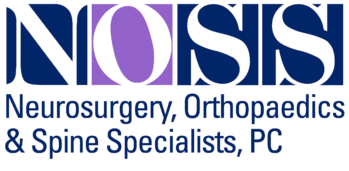Joint Replacement: From Diagnosis to Recovery
If you’re contemplating joint replacement surgery, you may find yourself wading through a sea of information, some of which could be misconceptions that cloud your understanding of what to expect. At NOSS, we aim to provide clear, concise insights into the realities of joint replacement, including what leads to the need for surgery, the process from diagnosis through recovery, and the non-surgical options available.
Common Misconceptions About Joint Replacement
Misconception 1: “Recovery is too long and difficult.”
Many people fear joint replacement surgery due to the perceived lengthy and challenging recovery period. While recovery does require time and effort, advances in surgical techniques and postoperative care have significantly shortened the recovery time. Most patients can expect to start walking the day after surgery and achieve major improvements within six weeks.
Misconception 2: “The new joint won’t feel natural.”
Another common concern is that the artificial joint won’t feel like a natural part of the body. Modern prosthetics are designed to mimic the function of natural joints closely, and many patients report significant pain relief and enhanced mobility post-surgery.
Misconception 3: “Surgery is my only option.”
Surgery is often considered only after other treatments have failed to alleviate symptoms. Non-surgical treatments can be effective, especially in the early stages of joint conditions.
Why Joint Replacement?
Joint replacement surgery typically becomes a consideration when a joint has suffered significant damage that impairs daily function and causes persistent pain. Conditions leading to this include:
- Osteoarthritis: Degenerative joint disease that erodes cartilage.
- Rheumatoid Arthritis: An autoimmune disease that attacks the joints.
- Post-traumatic Arthritis: Arthritis developing after an injury.
- Avascular Necrosis: Bone tissue death due to interrupted blood supply.
The Surgical Journey
Diagnosis: The journey begins with a thorough diagnosis, where your doctor will assess your medical history, conduct physical examinations, and likely order imaging tests like X-rays or MRIs to determine the extent of joint damage.
The Surgery: During the procedure, the damaged joint components are replaced with prosthetic parts. The surgery aims to relieve pain and restore function, and it is highly successful in terms of patient outcomes.
Recovery: Recovery may involve a short hospital stay, during which you’ll begin physical therapy to regain mobility and strength. Home recovery includes continued physical therapy and gradual return to everyday activities. Full recovery can vary, but most people return to their regular activities within 3 to 6 months.
The success rates of joint replacements are promising, with many studies reporting high levels of patient satisfaction and reduced pain post-surgery. For example, the American Academy of Orthopaedic Surgeons highlights that over 90% of patients experience significant pain relief after knee replacement.
Non-Surgical Alternatives
Before considering surgery, there are several non-surgical treatments to explore:
- Physical Therapy: Can strengthen joint-supporting muscles and improve flexibility.
- Medications: Anti-inflammatories and pain relievers can manage symptoms.
- Lifestyle Modifications: Weight management and activity adjustments can relieve joint stress.
- Injections: Corticosteroids or hyaluronic acid injections may provide temporary relief.
For those considering joint replacement, it’s important to base your decision on accurate information and thorough consultation with healthcare providers. Exploring all options, surgical and non-surgical, ensures that the chosen treatment aligns with your health needs and lifestyle goals. Remember, the goal of any treatment, whether surgical or not, is to improve your quality of life by alleviating pain and restoring function. If joint replacement is the recommended path, modern medicine offers effective solutions that can help you regain an active and fulfilling life.

